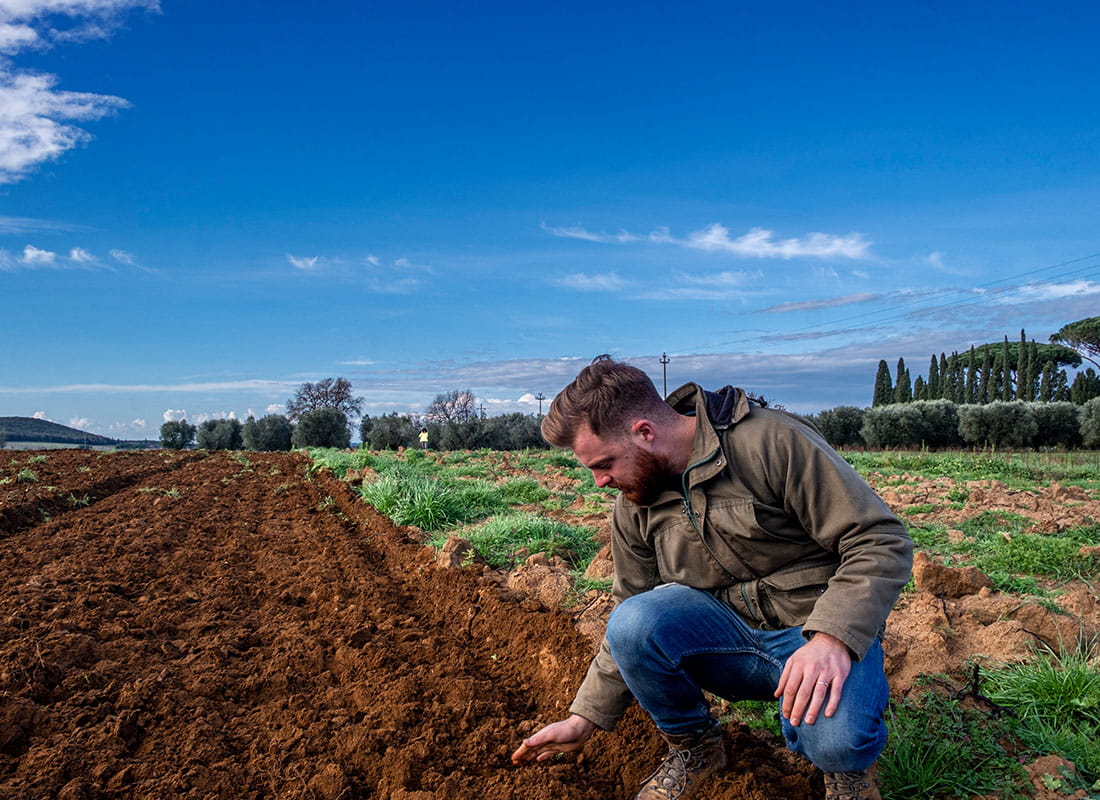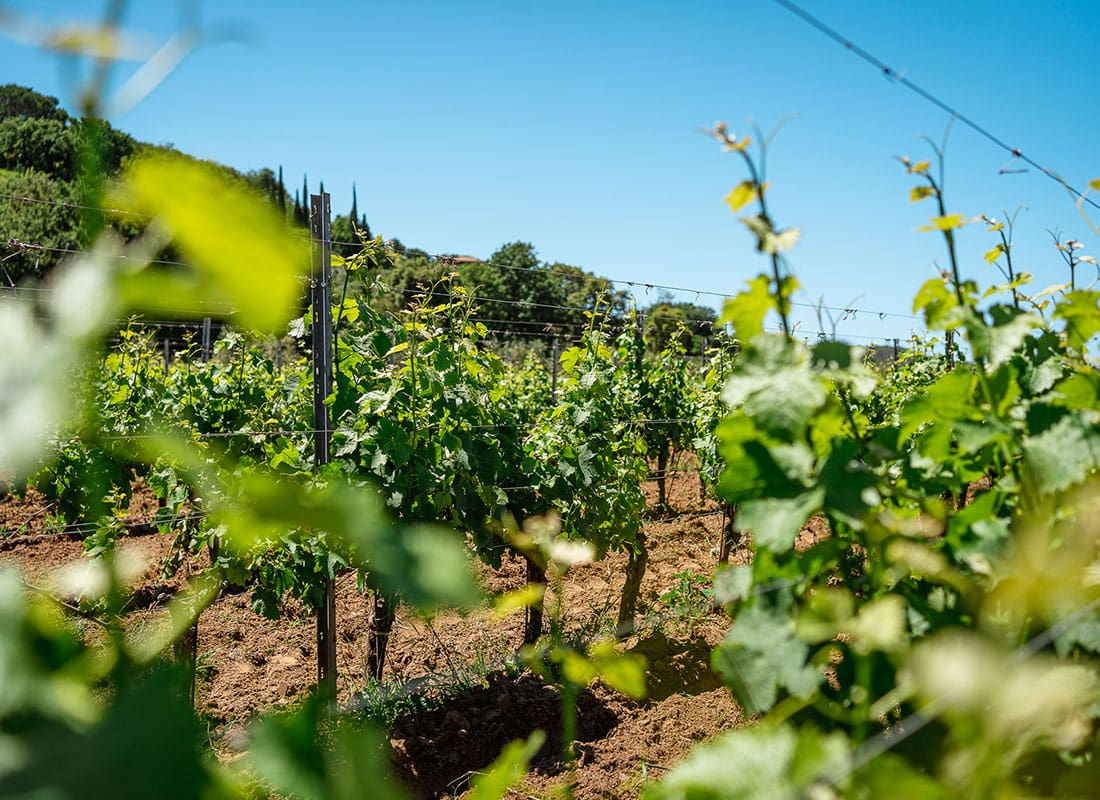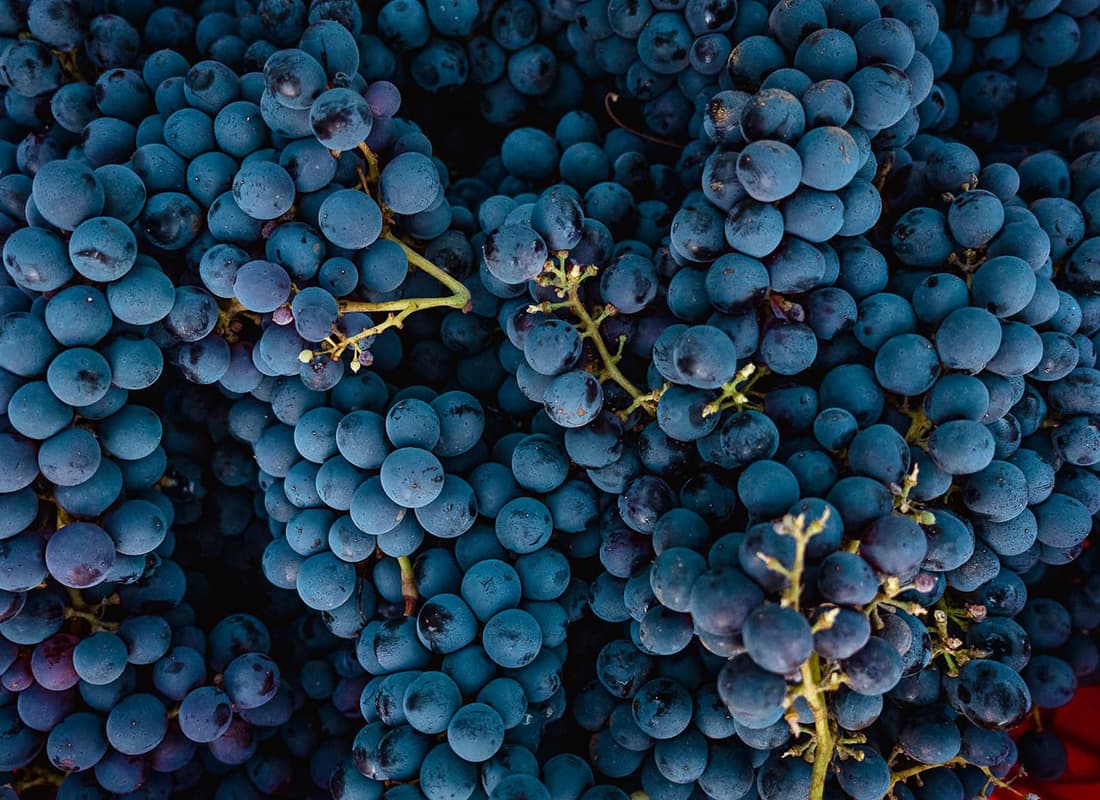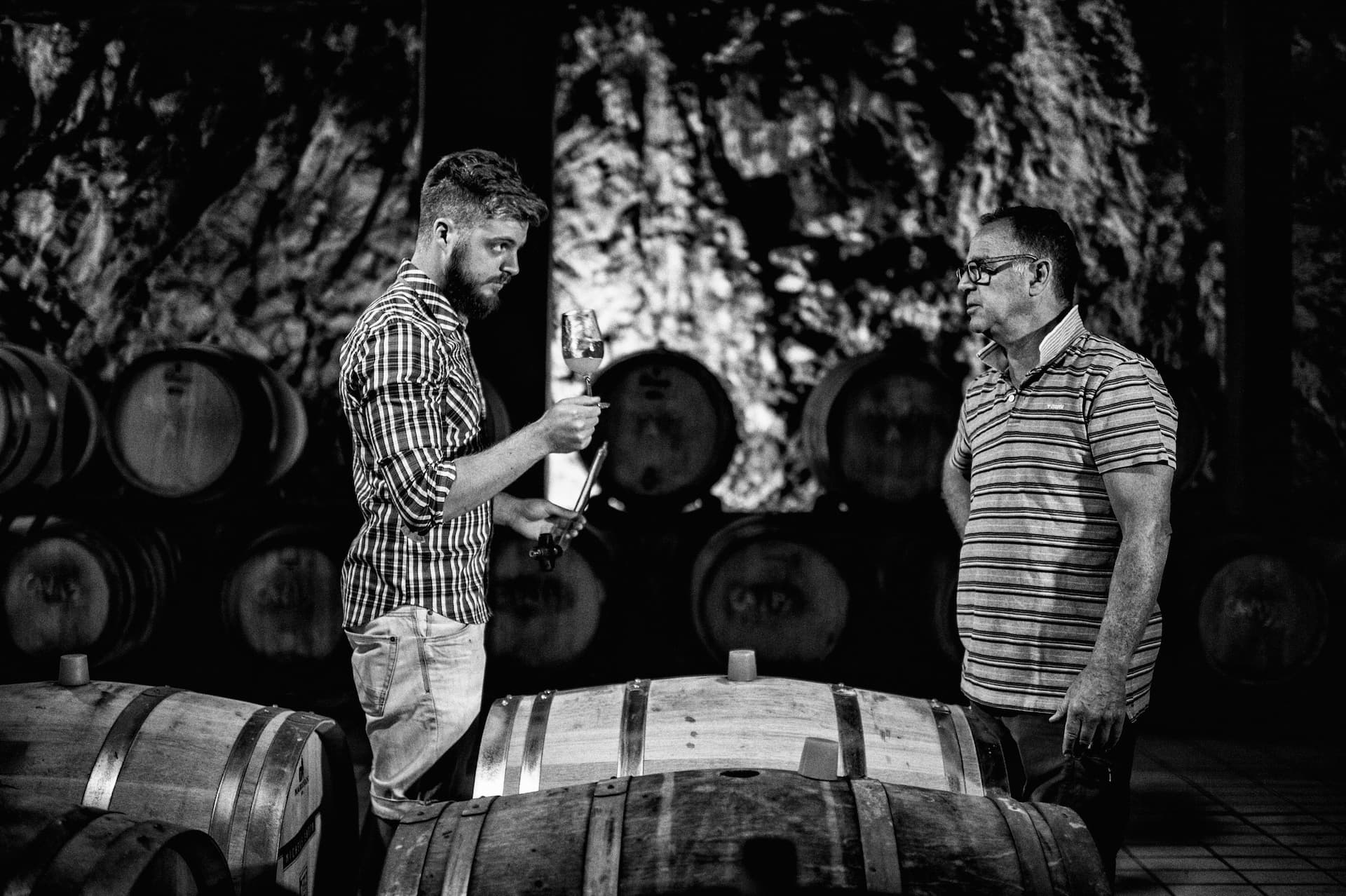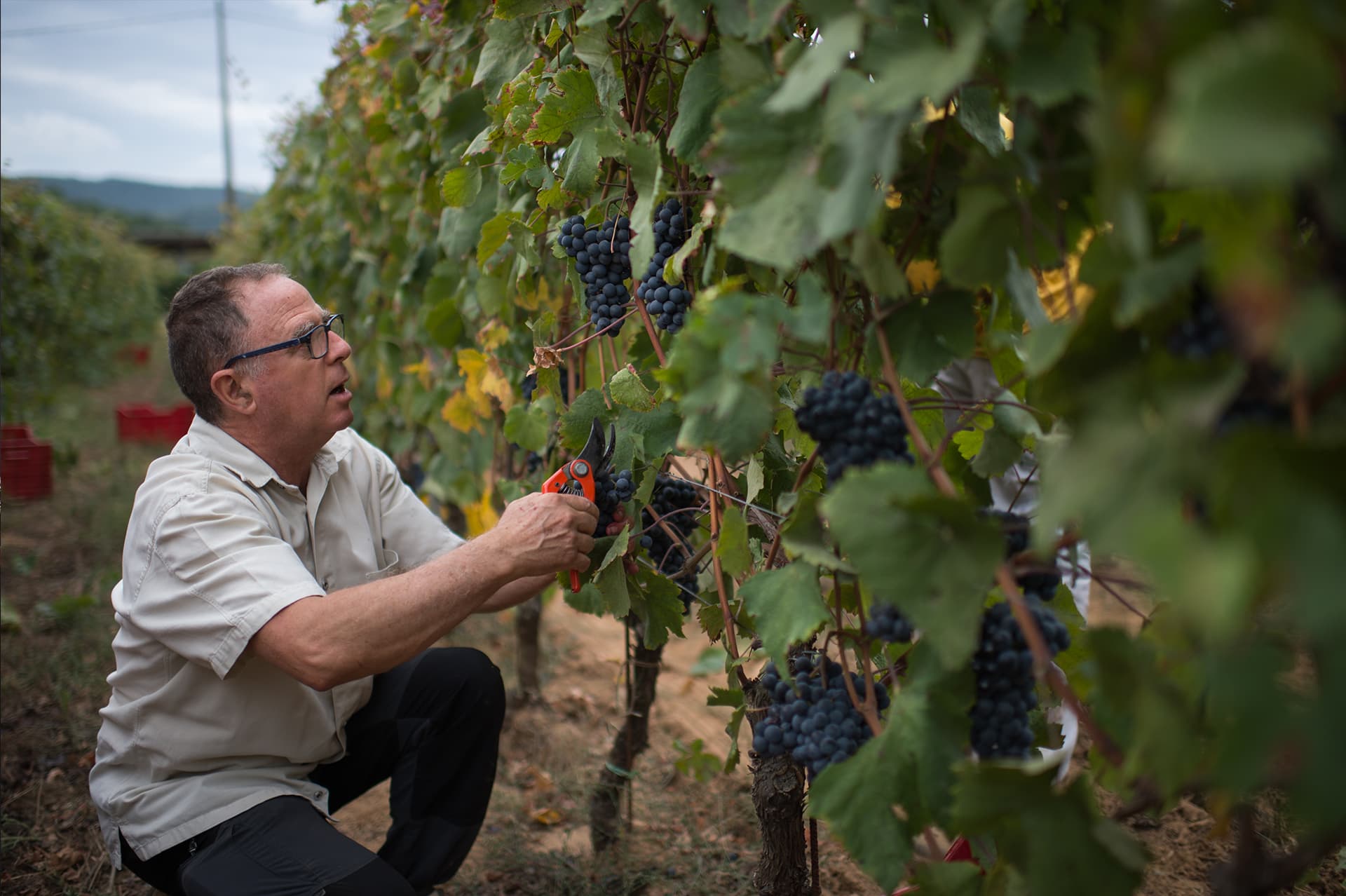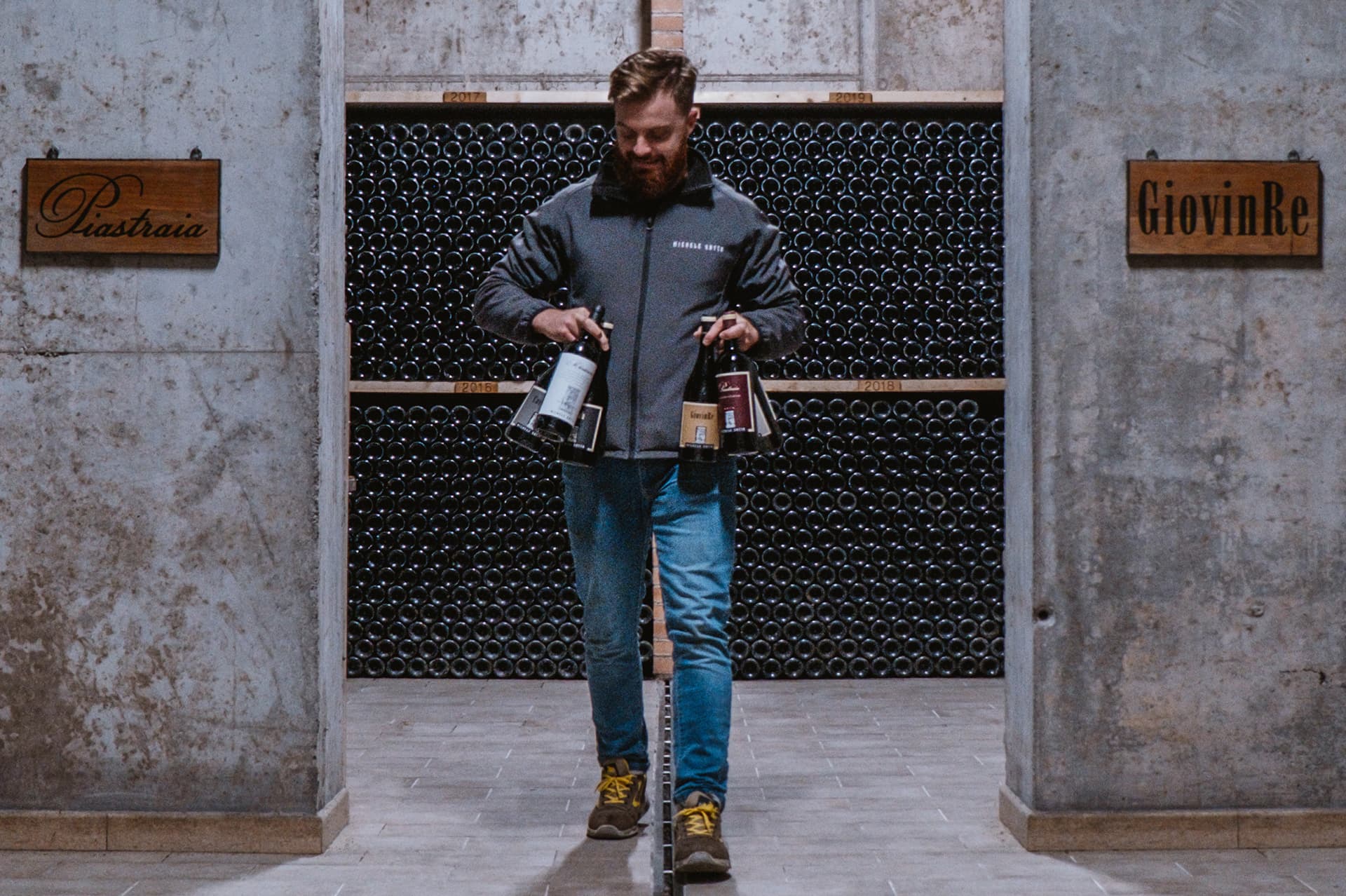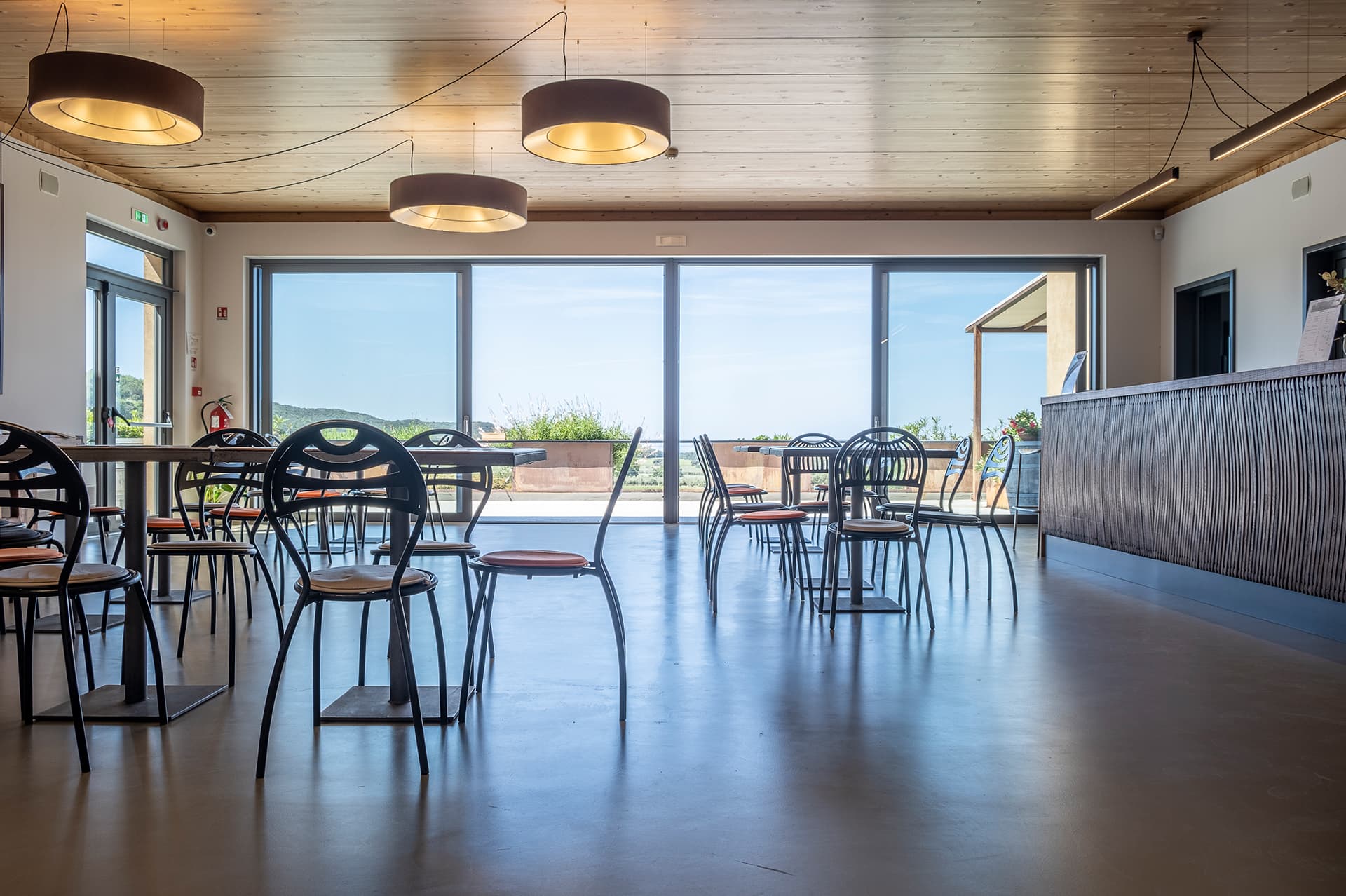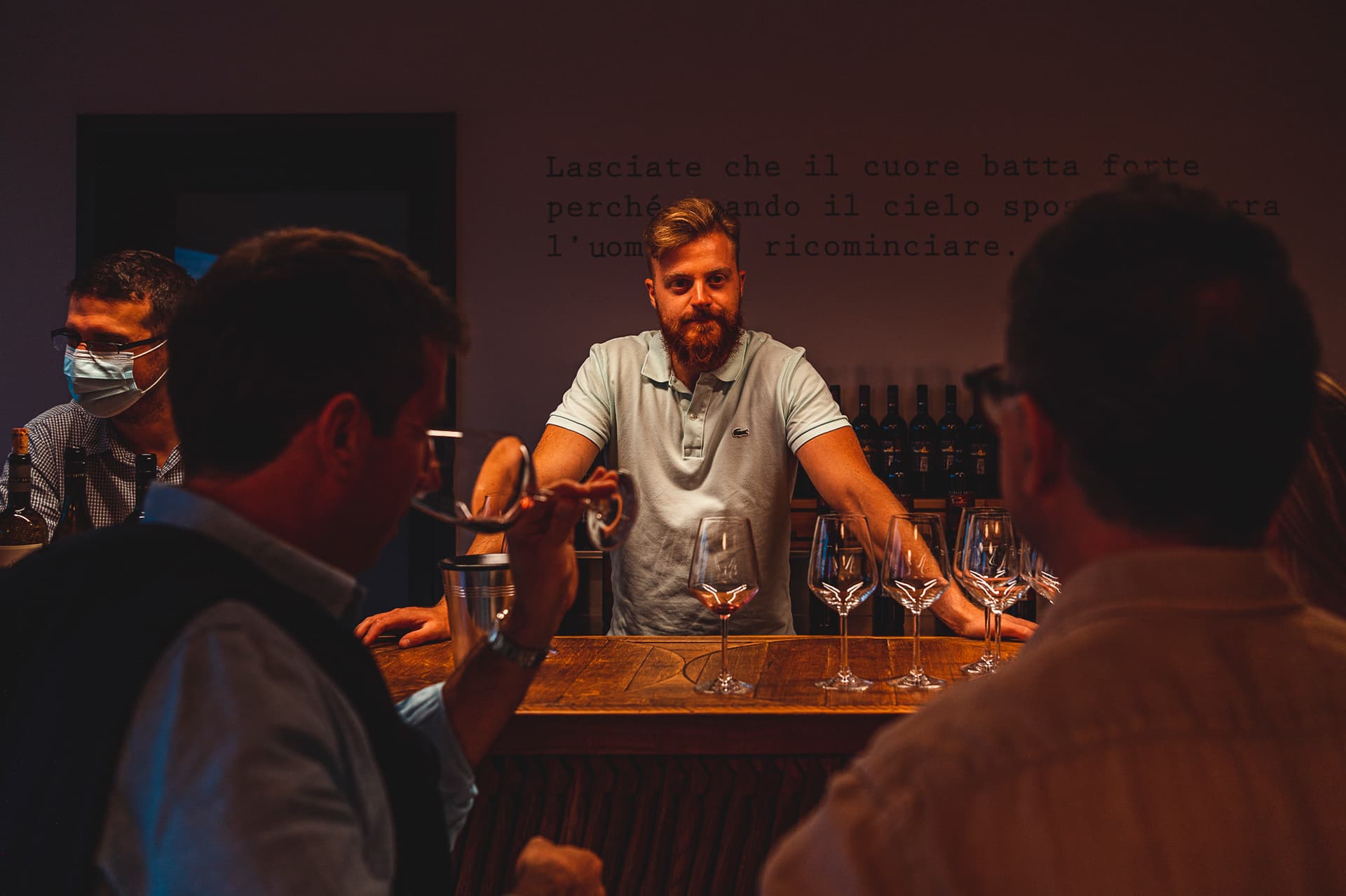The Vineyard
"… Do not even need to stop in front of the vineyard and recognize
the familiar and unheard features, only need the moment of the encounter"
Cesere Pavese
Between Hills, Sea and Wind
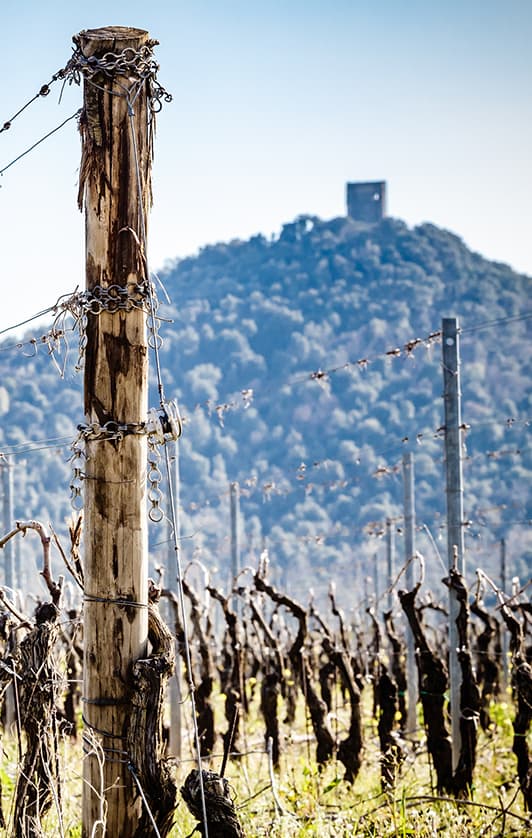
The peculiarity of the DOC Bolgheri, established in 1984, is that it comprises an area of land facing the Tyrrhenian Sea, towards the west and surrounded by hills on the remaining cardinal points, as well as a theatre watches the stage.
It is of significant importance the presence of the sea for three reasons.
he first is that it reflects the sunlight, thus allowing for a quantity and quality of light that allows a full and complete functioning of the photosynthetic apparatus of the plant, bringing the grape to very complex phenolic ripening.
The second very important aspect in that the sea acts as a thermal flywheel: in definition, the summers are not too hot during the day and yet, cool at night. In this way the plant is not stressed, but rather is induced to a more fluid functioning of the secondary metabolism.
Finally, there are winds blowing toward the coast. The wind is important because it makes the air less saturated with water. Moisture is one of the major causes of the development of fungal diseases and largely reflects the light of the sun, reducing the radiation on the plants. Moisture is one of the major causes of the development of fungal diseases and largely reflects the light of the sun, reducing the radiation on the plants. The winds that blow from the sea are directed by Monte Capanne (1,019 meters high) located on the island of Elba.
The surrounding hills protect the vineyards from the wind and violent alongside sporadic showers especially in the summer. Therefore August rains that could cause insidious rot little before the harvest, are less of a threat.
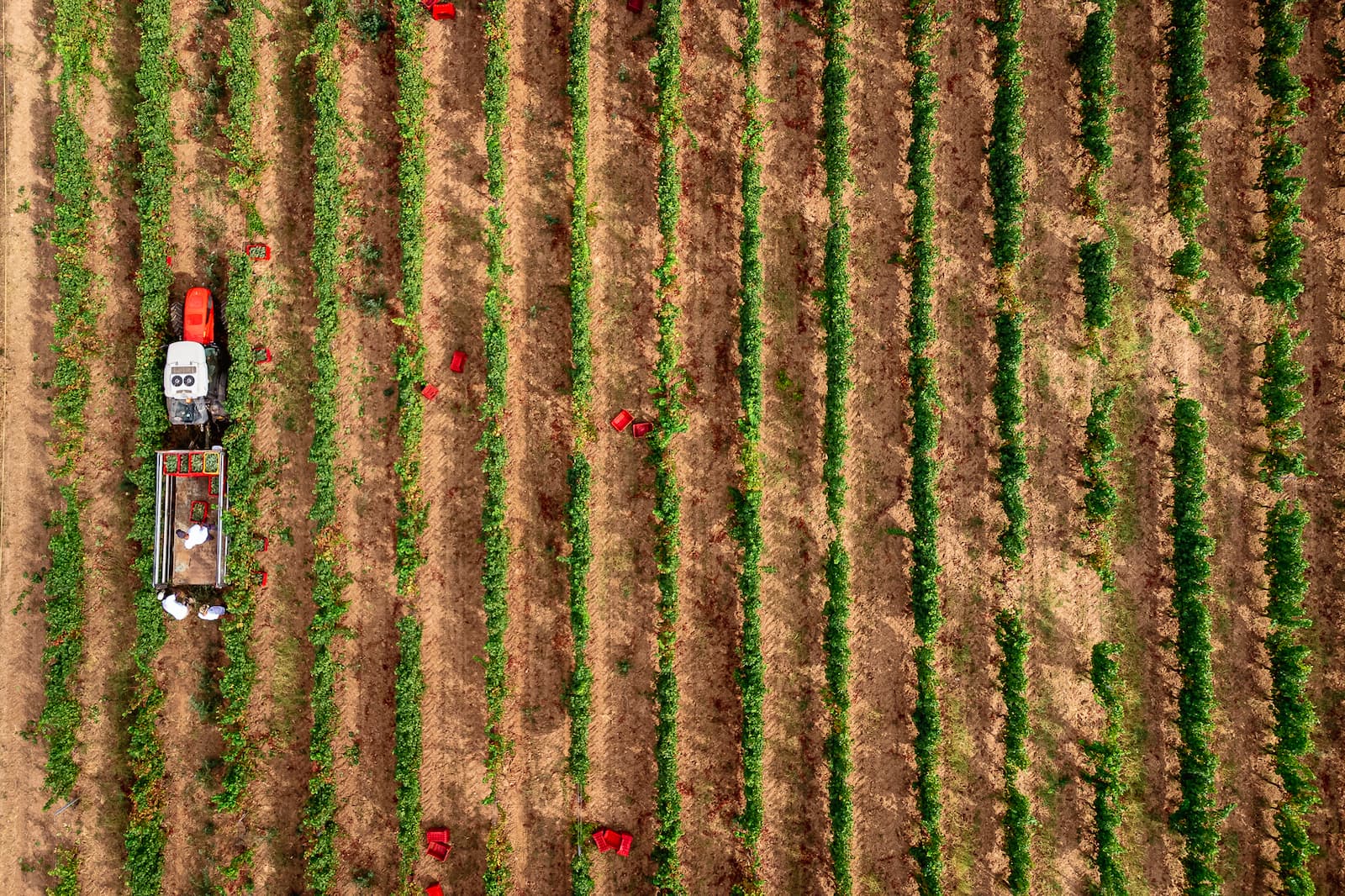
25 Hectares in the Bolgheri D.O.C.
The estate is family-run, with a now constant size of 25 hectares, and currently produces 150,000 bottles a year, all obtained from its own grapes.
The Bolgheri region is composed of the area that faces west towards the Tyrrhenian Sea, whereas on the other three sides of the compass it is surrounded by hills that create a sort of natural amphitheater, with characteristics that are different from anywhere else in the world.
A Versatile Ground
The soils are medium-textured, pebbly and with a considerable loam content; they are very deep and collect all the rainwater that is not absorbed by the surrounding hills.
These are very well-drained soils, which give the roots the possibility to develop and grow in a significant manner.
Sustainability
The farm produces sustainable grapes through biodynamic agronomic practices and to sustainability through photovoltaic energy production.
The vineyards, which face north and west, are in the most southern zone of the region, in the district known as “Accattapane”; they are Guyot-trained and with low plant density per hectare, so as not to stress the vines.
In each vineyard there are the cultivars that, after years of observation, the estate considers to be most representative of the area: Viognier, Vermentino and Sauvignon for the whites; Cabernet Sauvignon, Merlot, Syrah, Sangiovese and Teroldego for the reds.
In the winery, vinification is traditional, with the stalks in the case of Sangiovese and Syrah. For maturation, barriques, amphoras, and concrete tanks are used.
